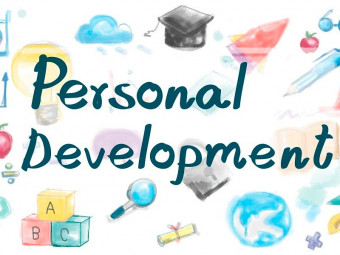Applied Hr People Analytics Certificate
Tags: HR Analytics
Data Science and Machine Learning for Human Resources
Last updated 2022-01-10 | 3.7
- Human Resource (People-) Analytics- KNIME: Data Science and Machine Learning Platform
- Tableau: Analytics and Business Intelligence Platform
What you'll learn
* Requirements
* Background in maths* statistics
* or coding is NOT required.
Description
How people are hired, who gets promoted, who gets the new job, who gets a raise, all those decisions are being made all the time in your company was traditionally being based on gut feeling. But in today's age, leaders prefer to make data-driven decisions - instead of solely relying on gut or their personal experience.
As a HR Analyst, you will be collecting, cleaning and making sense of the data you have about your people and putting it in a form it can be used for business decisions. We live in a talent constrained economy, so there's a huge demand for information about what is creating engagement, why are people leaving, what we can do to improve productivity, and so forth.
WHY BUSINESSES WANT TO HIRE HR ANALYTICS SKILLS?
Allows for data-driven decision making 88%
Drive/improve business performance 76%
Improve current programs and processes 71%
Solve important business problems 59%
Enhance respect for human resources 53%
Build productive executive relationships 24%
Increase funding for human capital 12%
WHY YOU SHOULD INVEST IN LEARNING HR ANALYTICS SKILLS?
Demand is high - but there is shortage of people who has the skill.
WHY THIS COURSE?
Developed with strong engagement from employers and HR analytics professionals, this innovative course provides you with an ability to identify people related business problems, and understand how analytics can be applied to develop solutions for these problems. Based on the Cross-Industry Standard Process for Data Mining (CRISP-DM) model, the course prepares you for a future of data driven and evidence-based decision making.
The teaching approach is non-technical with learning through doing; focused on teaching you to be able to understand and apply statistics and data science to solve problems and draw causal inferences in an organisational context. The instructor of this course has been teaching analytics for post-graduate students of business analytics and human resource management at a UK-based University. So the instructor has the knowledge of what is required for the HR-Analyst role and where the beginning students get frequently stuck - and that gets reflected throughout the course.
WHAT THIS COURSE IS NOT?
You will study how statistics and data science can be applied in HR. This course, however, shall neither cover the theory and practice of strategic Human Resource Management (HRM) nor theory of statistics because we believe in real-world practice of HR Analytics - you do not need a theoretical understanding of statistics. In short: Whatever you need to get started as a HR Analyst is there in the course. Things which you don't need (or are rather optional) are not there. That being said, there is no harm in learning the concepts of statistics in-depth. Knowledge is power after all: more the merrier. However, it is very important for you to have an in-depth understanding of the business or organisation and basics of HRM theory from academic books.
This is not the best possible course - and neither it can replace the rigours of an University education. The objective of this course is to help you get started.
WHAT HR-ANALYTICS CAN'T DO?
Remember: HR-ANALYTICS is a tool and no tool will give you quality data or make good decisions for you. That is still on you. So before you rush out and make your company invest in an analytics project - make sure you've worked with the IT department and your own internal team to validate the quality of the data you have and you have a good data dictionary so that you know what it means. All of those issues of quality and data definition are still on you. The tools will help you manipulate and visualize and understand the data. But taking care of the data quality and making decisions based on that is still your wisdom.
Be transparent with their employees about what data they're collecting and what they're going to do with it and what they're not going to do with it. And those are rules that you have to create and live by and hold yourself accountable.
Be Ethical. Consider issues related to the Privacy, Security, Fairness, and Purpose of the data and the analytics project.
Setting the expectations right:
You do not need to be good at maths or statistics or coding - although having a knowledge is an advantage. However, this course is meant assuming that the students do not have any background in advanced statistics and maths. We will cover few concepts in the most easiest way possible - as we go along. Plus we will be using drag-and-drop software to learn analytics - so coding experiences or knowledge is not required either.
Contrary to the popular belief, analytics is not a magic-solution for answering all business questions.
Your organisation might not have the data you need to address its' business questions. You might require to collect the data all by yourself (e.g. by conducting surveys on employees).
People Analytics is new. Some stakeholders might not understand or appreciate what you do.
Make sure you do not breach the code of ethics. In other words, your data-processing and handling practises should be compliant with country-/organisation-specific data privacy regulatory bodies like General Data Protection Regulation (GDPR for European Union). If unsure of the compliances for your region or organisation, cross-check this with your manager, local librarian, university, legal advisor, and similar reliable sources.
This course is a technical course with the aim to increase your Analytics acumen, but alone it will not lead to success. Business acumen— and an understanding of how to leverage people to drive improved outcomes is vital for success - but beyond the scope of this course. Students should refer to soft skill development courses for that.
While HR analytics is a promising field, there are certain barriers you might need to tackle at the work place:
Data-collection issues
Data-integration issues
Lack of skills
Lack of management support
Lack of funding
No systematic process
Who this course is for:
- Students pursuing MSc Human Resource, Business Management, Organisational Behaviour or similar other disciplines.
- Human Resource Personnel
- Analysts wanting to learn the specific challenges in human resources
- Business Owners
Course content
4 sections • 36 lectures
Overview of the HR-Analytics Course Preview 05:11
Using Analytics to Plan the Workforce: Part 1 Preview 11:32
Using Analytics to Plan the Workforce: Part 2 Preview 16:40
Talent-Sourcing using Analytics: Part 1 Preview 05:24
Talent-Sourcing using Analytics: Part 2 Preview 14:33
Talent-Sourcing using Analytics: Part 3 Preview 15:44
Analytics in Talent Acquisition or Hiring Preview 24:13
What is Onboarding? Preview 09:00
How to do Onboarding Analytics? Preview 16:32
How and why to implement Analytics to boost Engagement? Preview 04:57
What is Data-Science? Preview 03:58
How to do a Data-Science Project step-by-step? Preview 06:03
What is Machine Learning? Preview 04:40
Getting started with People (HR-) Analytics. Preview 02:03
5 easy steps: How to implement Data-Analytics for Human Resources? Preview 02:28
How to download Tableau and KNIME Analytic Platform Preview 01:02
Basics of Statistics within 5 minutes [BONUS]: Audio Podcast Preview 04:33
Basics of Statistics [BONUS] Preview 03:43
Learning Machine Learning without knowing the basics of statistics - is like going to a party but without wearing a dress. In simpler words, learning statistics (at least how it can be applied - to answer what kind of questions - how to infer/report the findings) is mandatory. Strangely, many courses on Data-Analytics skip this section and assumes the student to know it beforehand. In this course, however, I will try to cover the basics - whatever you will need to get started. But honestly speaking, it is impossible to cover everything because statistics is a vast subject in itself to study for a lifetime - so if not everything, I will touch upon the most vital concepts which you will eventually need while learning predictive analytics later on in this course and your career as a data analyst.
By the end of this lecture, you will learn what are the measures of central tendency and variances, how to find relationships between two or more variables, how to predict an outcome from one or more predictors and so forth. Please refer to the PDF attached with this lecture and feel free to be surf the web to learn a bit more - if you wish to.
Understanding the Business [BONUS] Preview 01:42
What is Data? Preview 04:20
How to Acquire Data? Preview 05:45
What is Data-Preprocessing? Preview 12:12
How to spot and remove outliers using Knowledge-based rule system? Preview 13:45
How to spot and remove outliers using Statistic-based detection system? Preview 06:47
How to fix errors in nominal variables? Preview 06:17
How to spot missing values with Excel Spreadsheet? Preview 02:43
How to detect missing values with KNIME? Preview 05:40
How to fix missing values with Excel Spreadsheet and KNIME? Preview 10:45
Dimensional Reduction: Feature Selection Preview 10:33
Dimensional Reduction: Feature Generation Preview 13:44
Acquisition/Hiring Analytics: Building a Probabilistic Neural Network Model Preview 20:38
Employee Engagement
Learn more about engagement by taking this quiz.








 This course includes:
This course includes:
![Flutter & Dart - The Complete Guide [2022 Edition]](https://img-c.udemycdn.com/course/100x100/1708340_7108_5.jpg)















